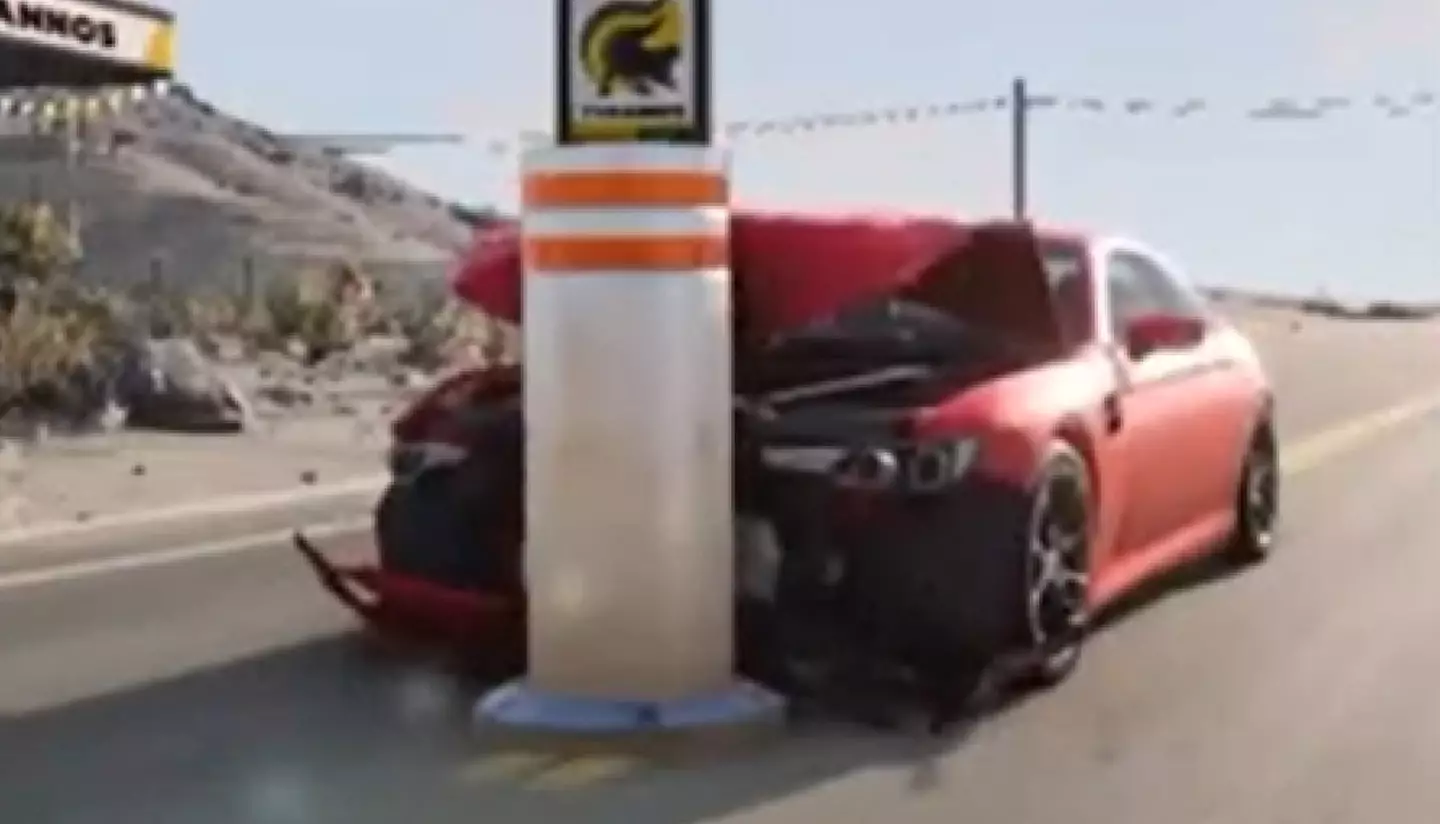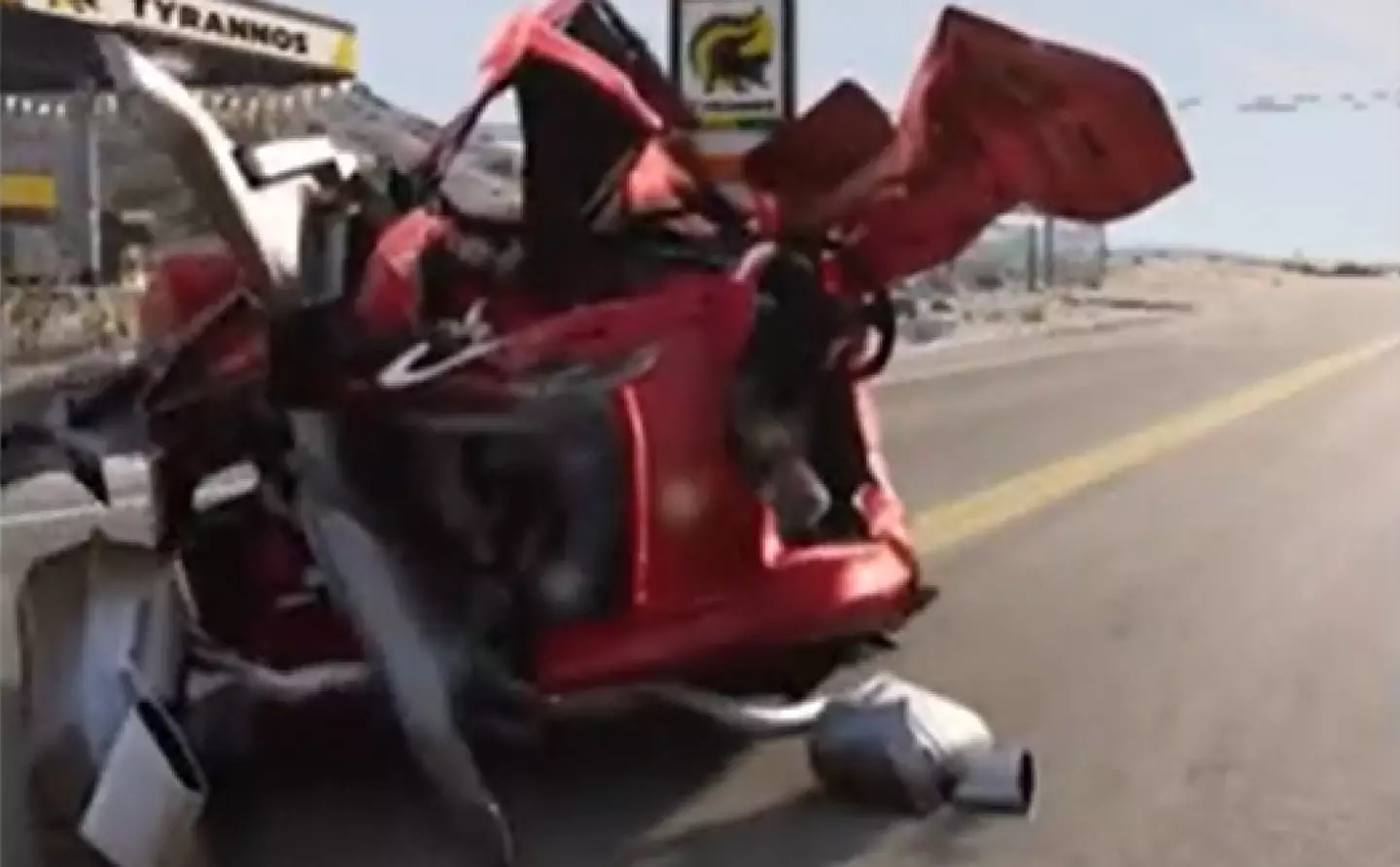
An absolutely terrifying video simulating what would happen to a car if it struck a bollard at different speeds might make you think twice about making your next journey as quickly as possible.
Nobody really needs extra motivation not to be in a car crash but seeing the extent of the damage caused the higher the speedometer goes is a scary reminder of just how much destruction can be caused.
Thanks to physics we all know that the faster a car is going the more destructive the crash is going to be if it hits something.
A simulation of a series of crashes in the driving game BeamNG.drive was set up to demonstrate exactly what would happen to the same car in the same conditions if all you changed about the crash was the speed of the impact.
Advert
The game itself is one of the top-reviewed of all time and has received interest from stunt crews working on movies who want to use it to simulate dramatic crashes before they put an actual car on the line.

The first crash was set at 30mph and the cars crumple zones did their job but the vehicle was otherwise undamaged, the same couldn't be said for the other crashes once the speed went higher.
A crash at 50mph produced more noticeable damage, while an 80mph collision wrecked the front end of the car.
Advert
120mph was far worse, rendering the car an unrecognisable and unsalvageable wreck, and the force of the impact at 160mph was powerful enough to tear one of the wheels off.
Still, the worst of the damage was saved for the simulated crashes which occurred at 200mph and 260mph as the car just wrapped around the bollard and turned into a ball of wreckage where the chances of survival would be pretty much nil.
Fortunately plenty of cars can't go that quickly and even if they could reaching those speeds on the roads would be incredibly difficult.
People were horrified to see how a pristine car could get instantly destroyed during the higher speed crashes, and one person was so scared of the results that they declared they were 'never driving above 30mph'.
Advert

Another took away the lesson 'don't crash over 120mph' while a third said 'this why I be cruising, nothing to prove out here' which sounds like the right approach.
Others said the simulation had actually toned down how awful some of the crashes would be while noting that anyone in the car would have 'G-force crushing your organs while impact crushes your bones', which sounds unpleasant.
The Mythbusters once decided they wanted to figure out how fast a car would have to be going to slice itself in half upon collision.
Advert
They managed to work out that a 500mph crash would split a car almost perfectly in half, smashing the engine block apart and almost certainly resulting in the death of anyone who would have been inside.
Fortunately outside of jet powered testing models you can't get cars which go that fast.
Topics: Technology, Cars